FREE SHIPPING on orders over $500 | Use code ON25FREESHIP
FREE SHIPPING on orders over $500 | Use Code ON25FREESHIP at Checkout
A 38-year-old female patient in good general health presented to my practice with interproximal carious lesions affecting tooth #2 (MO). From the BW image I could tell it had extended axially into the dentin. After profound anesthesia was accomplished using a carpule of OraBloc Articaine 4% with epinephrine 1:100.000 via infiltration, I initiated my access using a #2 round diamond bur. In Figure 1 you can observe the demineralization beyond the DEJ.
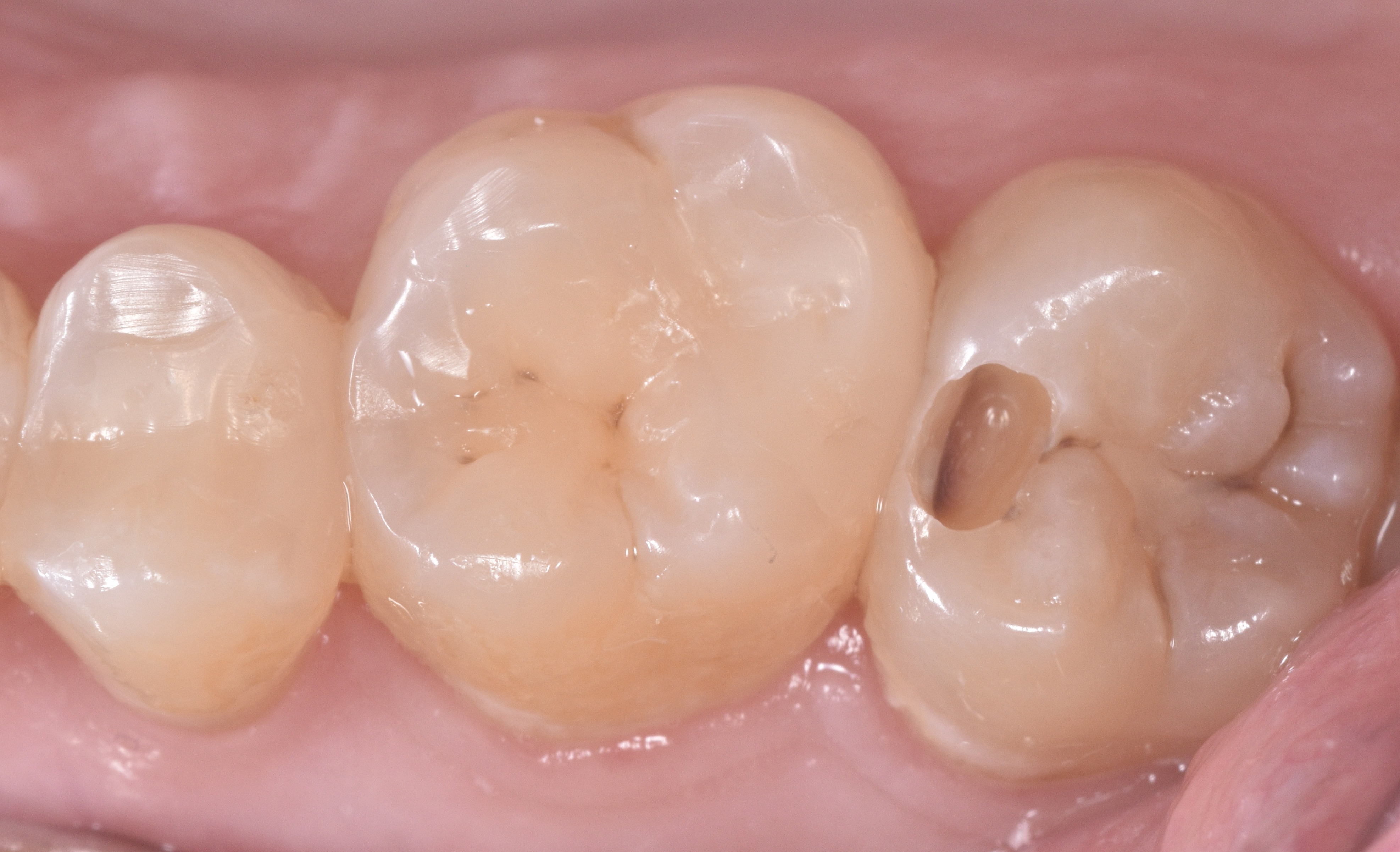
|
| Figure 1. Using a #2 round diamonde bur, demineralization beyond the DEJ can be observed. |
After initial caries removal, rubber dam isolation was completed using a black Hysolate dam which helps with contrast, allowing for better view of the operative field (Figure 2). Caries detection die was used for us to determine that complete caries excavation was accomplished and a clean peripheral seal zone obtained (Figures 3-4).
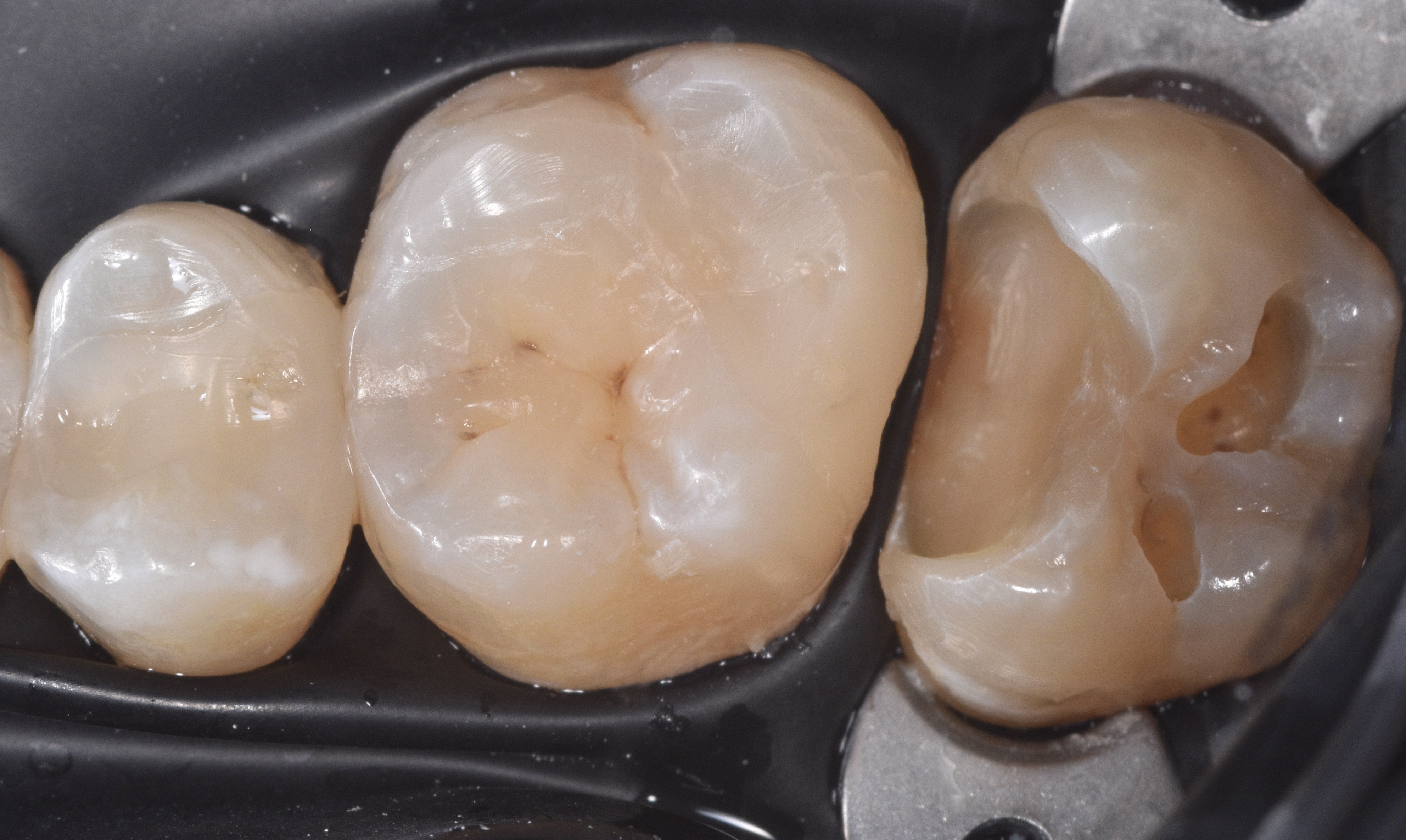
|
| Figure 2. After initial carries removal, rubber dam isolation was completed using a black Hysolate dam. |

|
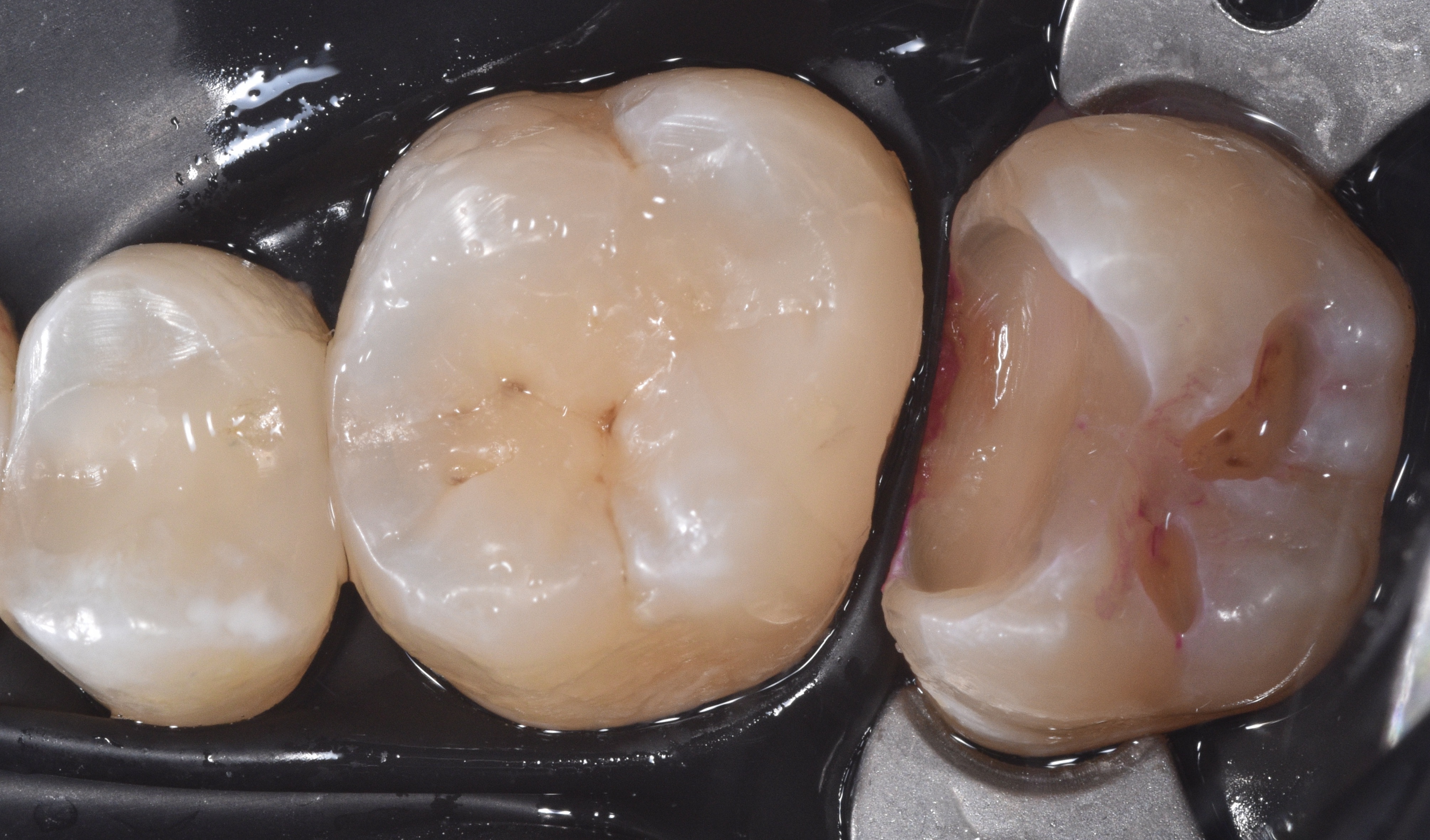
|
| Figures 3 and 4. Caries detection die was used to determine that complete caries excavation was accomplished and a clean peripheral seal zone obtained. | |
We then cleaned the preparations using 23-micron aluminum oxide combined with distilled water (AquaCare) (Figure 5) and moved forward with selecting the ideal matrix system for this case. Garrsion’s Quad matrix system combined with a green 3D Fusion matrix band is my preferred choice when it comes to wide a deep proximal box (Figure 6). The reason behind this is that if I were to use a separate system to elevate the deep margin first, this will create a “transition” line from the deep margin composite layer to the subsequent layer that recreates the proximal wall. This transition line is hard to polish due to its location and can become a source of plaque accumulation. On the other hand, by using a single step matrix system these layers will blend in seemingly, not requiring additional polishing.
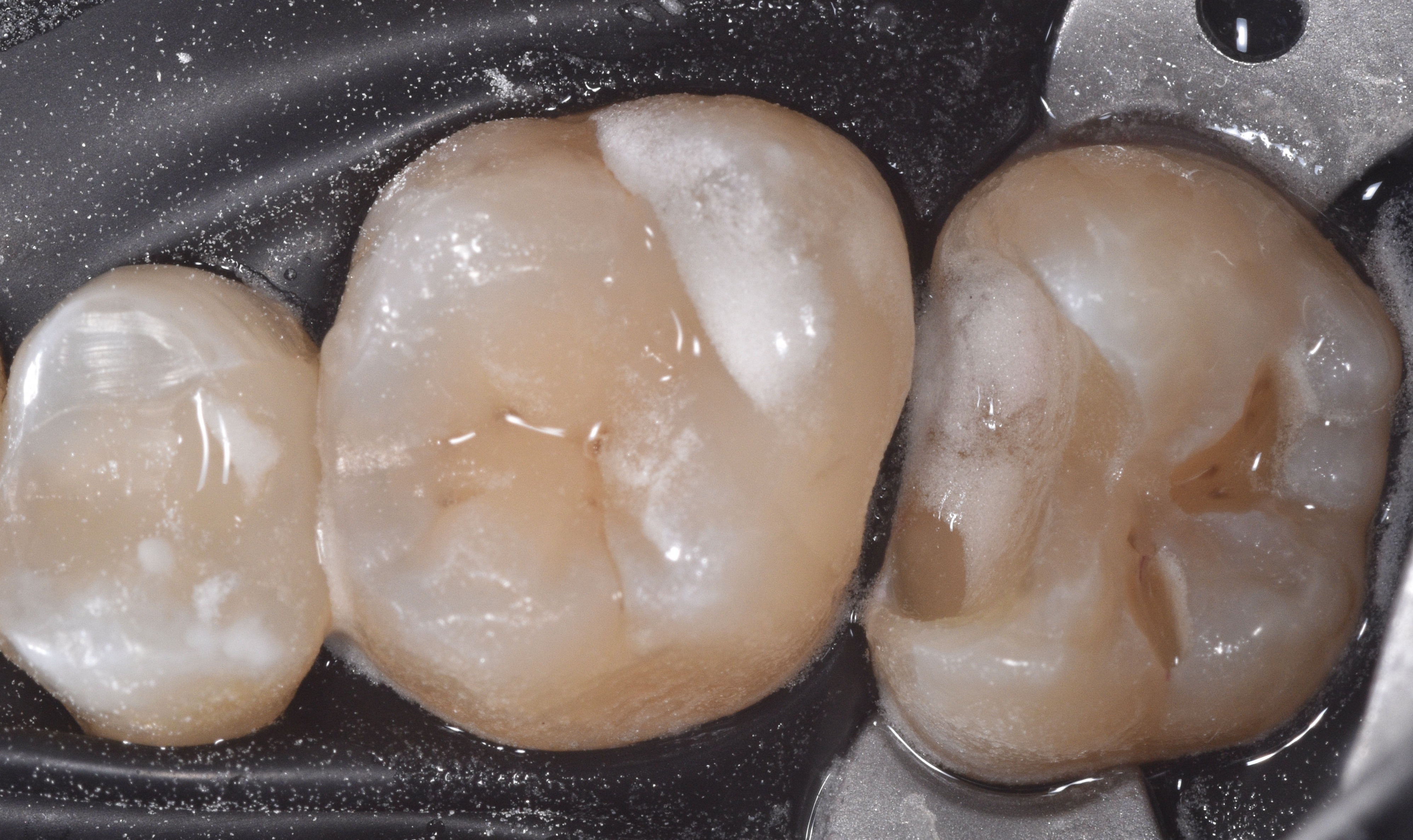
|
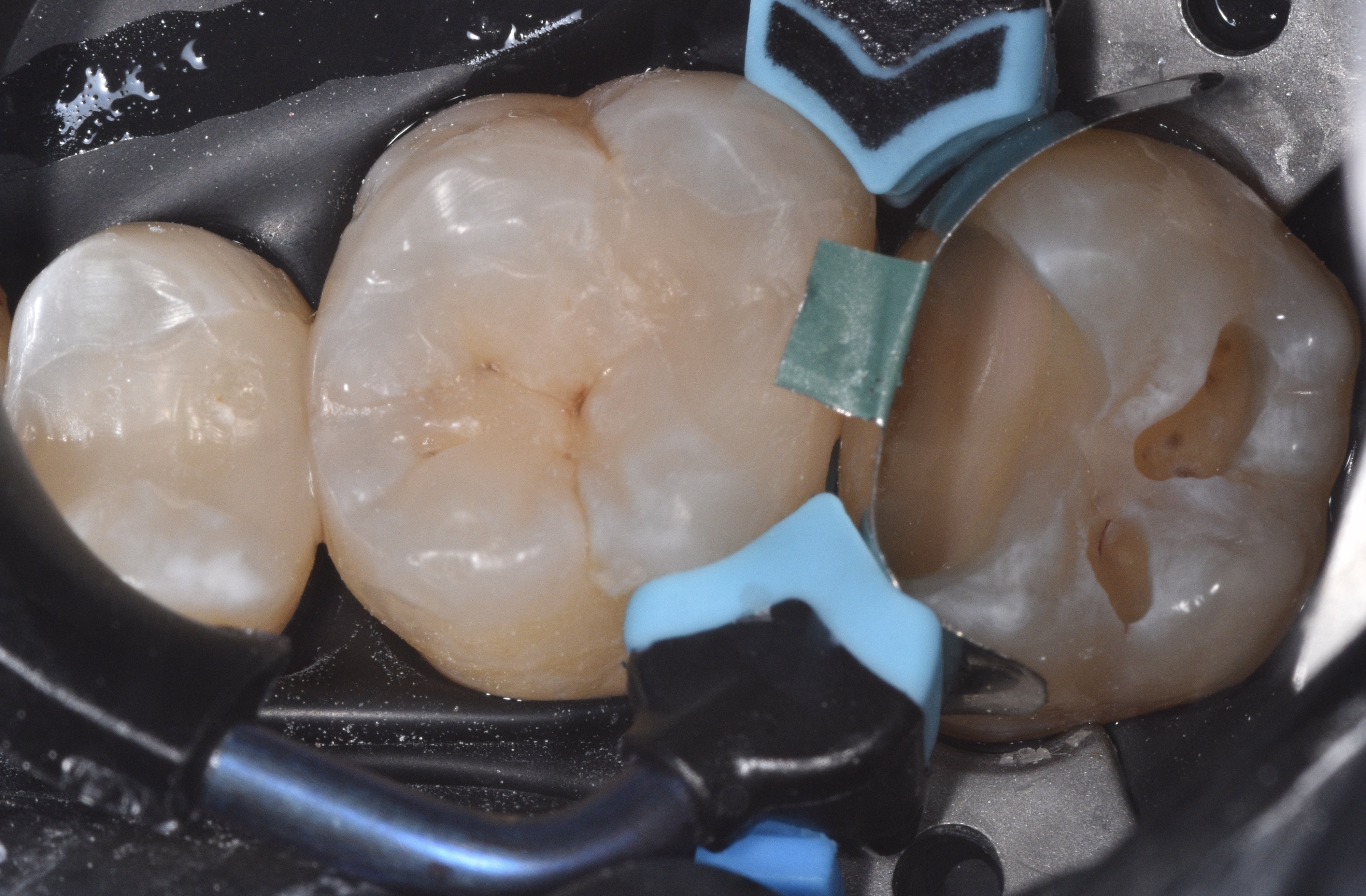
|
| Figure 5. The preparation was cleaned using 23-micron aluminum oxide combined with distilled water (AquaCare). | Figure 6. Garrison’s Quad matrix system combined with Garrison Dead Soft band is my preferred choice for wide and deep proximal box. |
The Restorative procedure was initiated with selective enamel etching for 15 seconds, followed by rinsing and drying (Figure 7).
A two-step SE adhesive system was applied (OptiBond Extra Universal- Kerr) and light cured. We then elevated the deep margin with a continued single horizontal layer (2mm) of Harmonize A2 dentin shade (Kerr) composite and light cured it for 20 seconds (Figure 8).
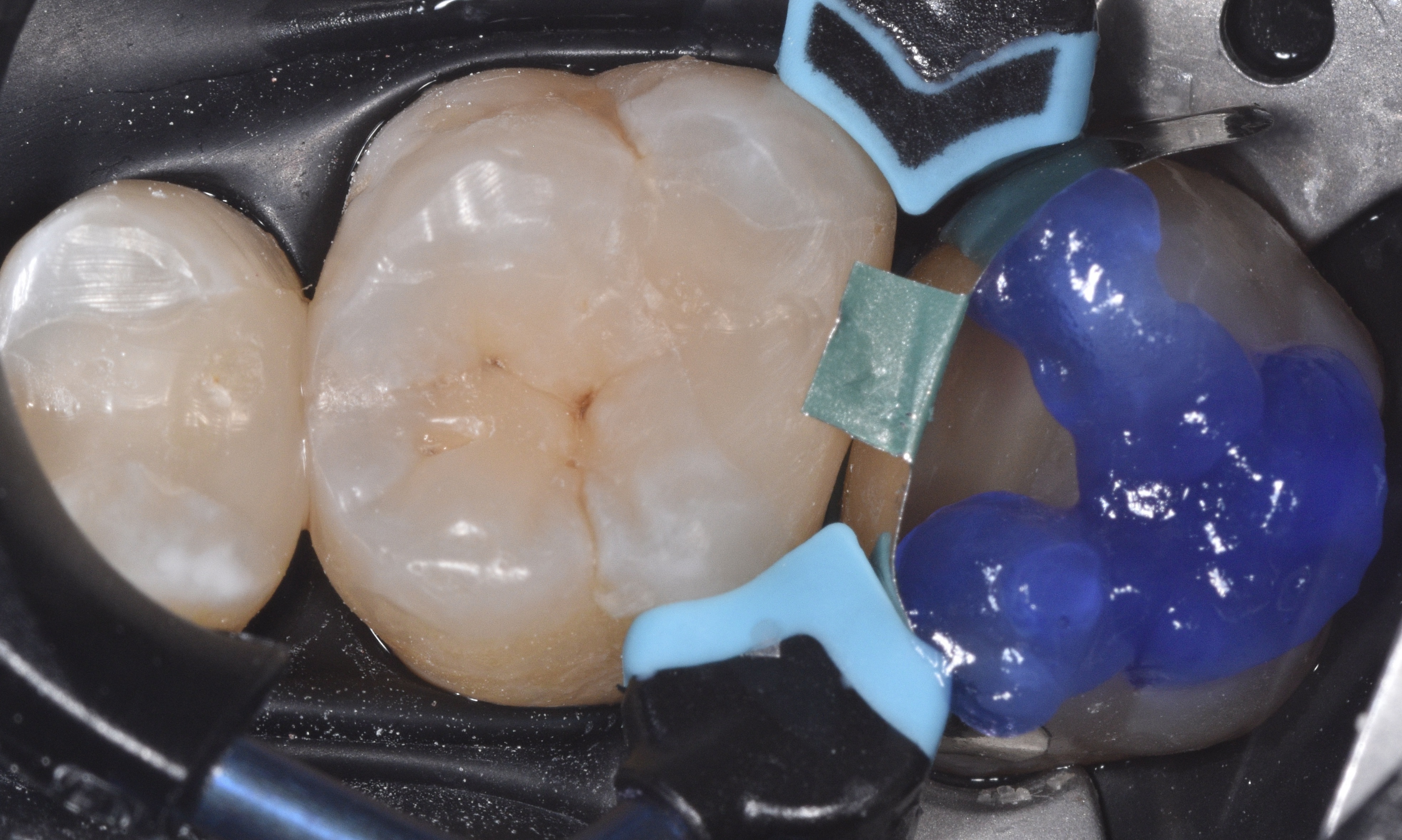
|
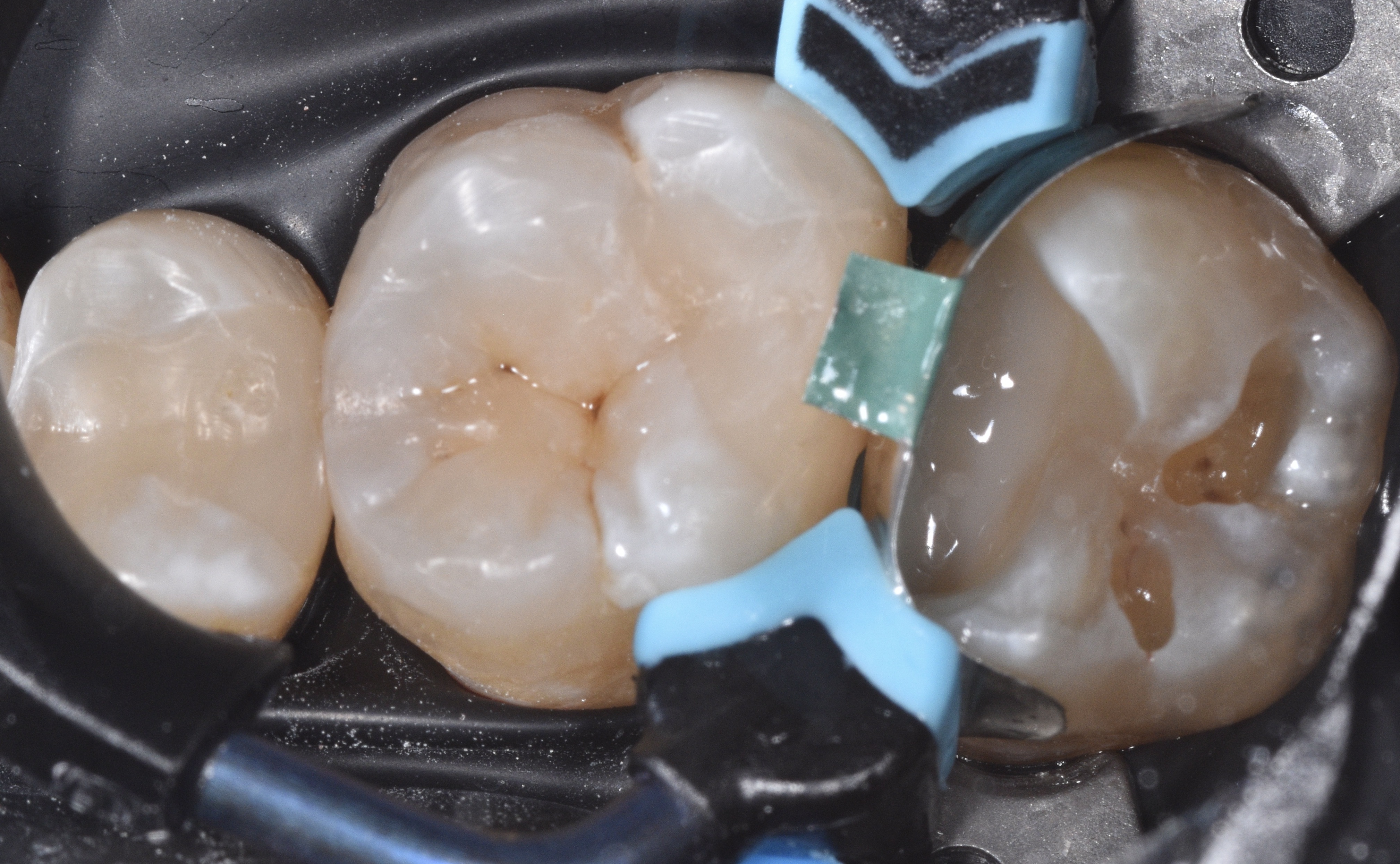
|
| Figure 7. Restorative procedure was initiated with selective enamel etching for 15 seconds, followed by rinsing and drying. | Figure 8. A two-step SE adhseive system was applied and light cured. We then elevated the deep margin with a continued single horizontal layer of Harmonize A2. |
This was followed by building the proximal wall (centripetal technique) using the same composite (Figure 9).
Prior to adding composite to the occlusal surface, we removed the Quad ring, wedge and matrix band to make sure we had obtained a smooth transition from gingival to occlusal, as well as to verify the contact tightness (Figure 10).
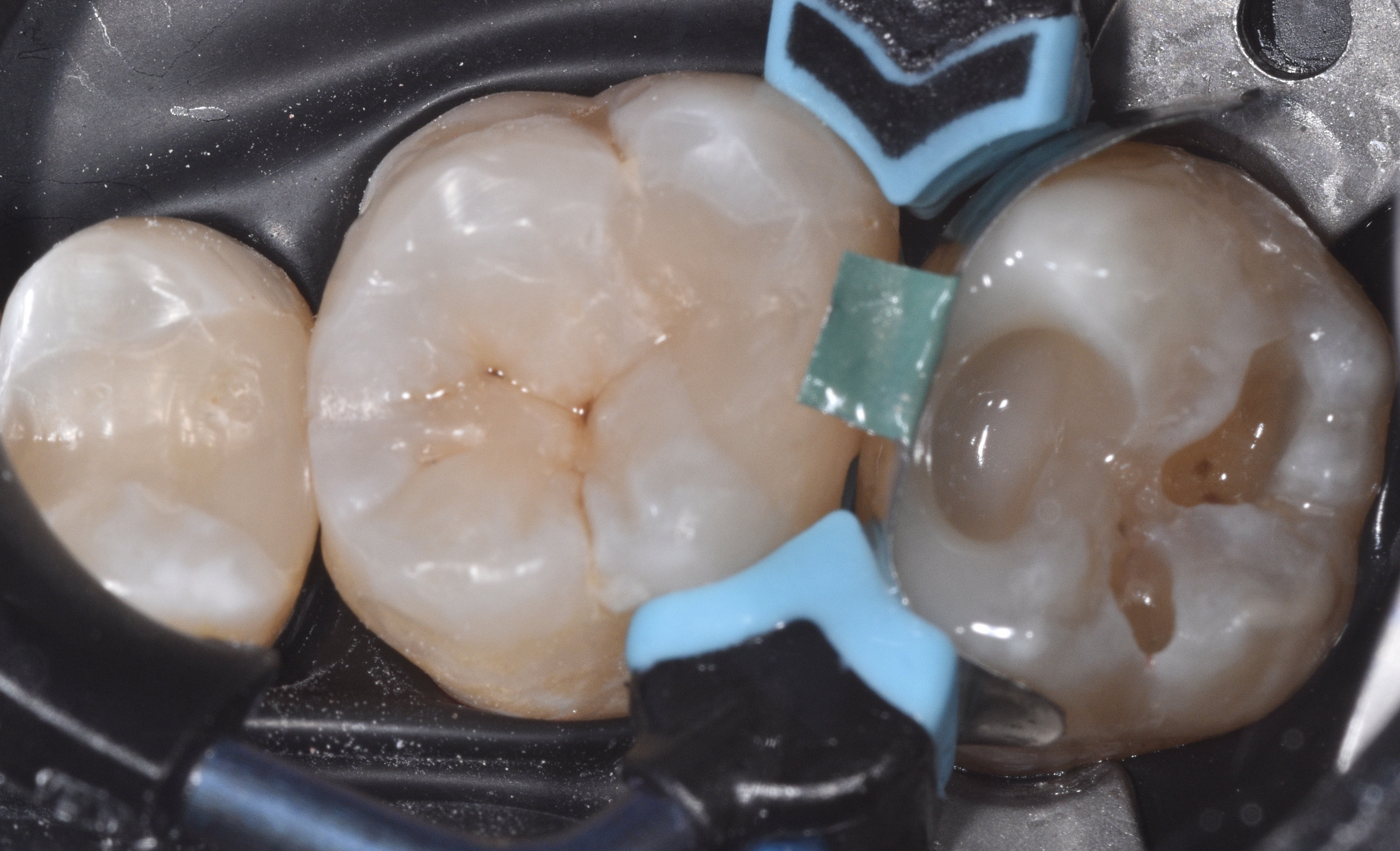
|
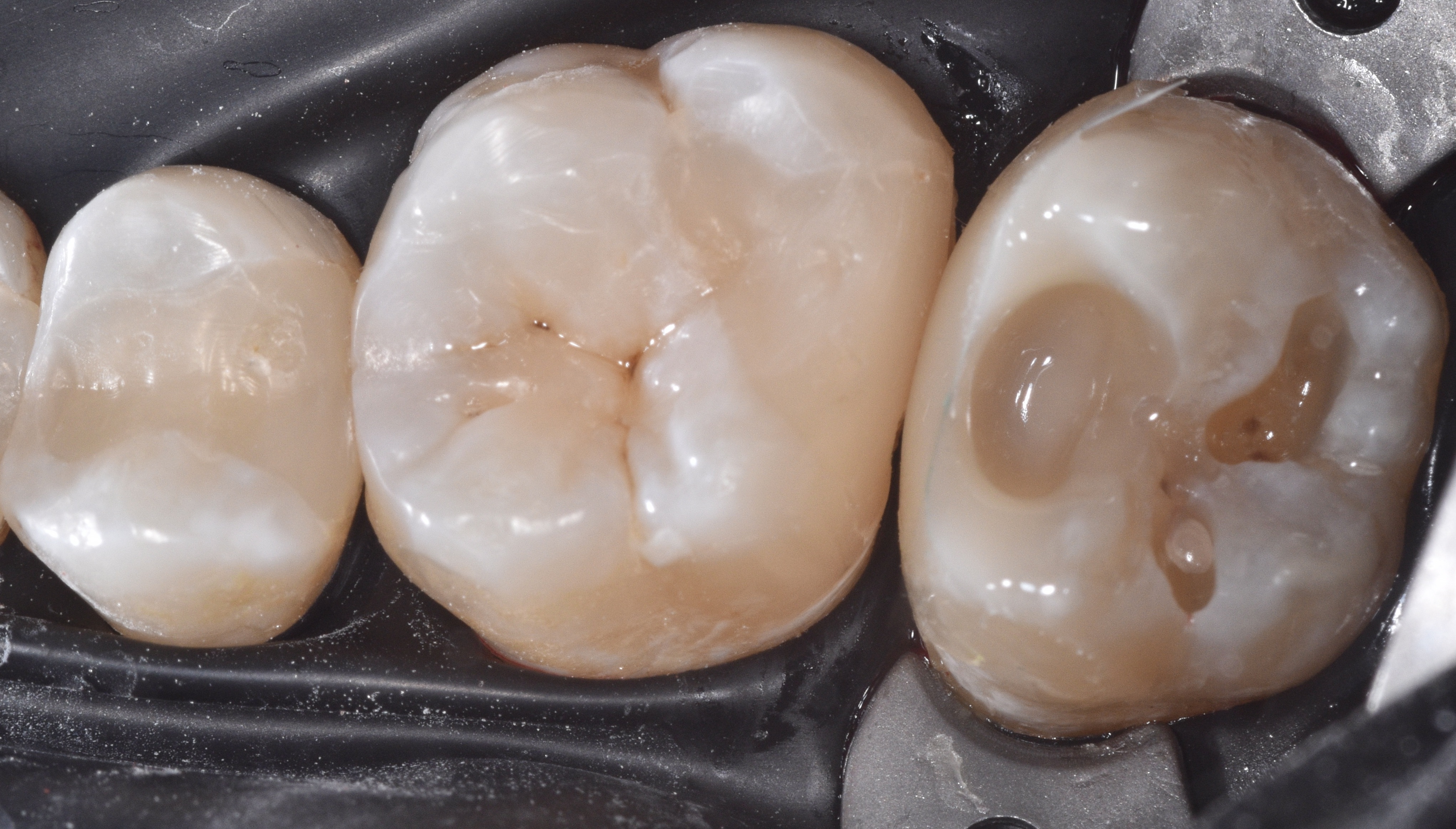
|
| Figure 9. Followed by building the proximal wall using the same composite. | Figure 10. Before removing Quad ring, wedge and matrix band, we made sure a smooth transition from gingival to occlusal was obtained. |
One horizontal and two oblique layers (buccal and lingual) to replace the enamel layer were placed and cure individually as the final layers (Figure11).
This is followed by removal of the rubber dam, adjusting occlusion, finishing and polishing using a combination of multifluted carbide burs, enhace points and soflex disc (Figure 12).
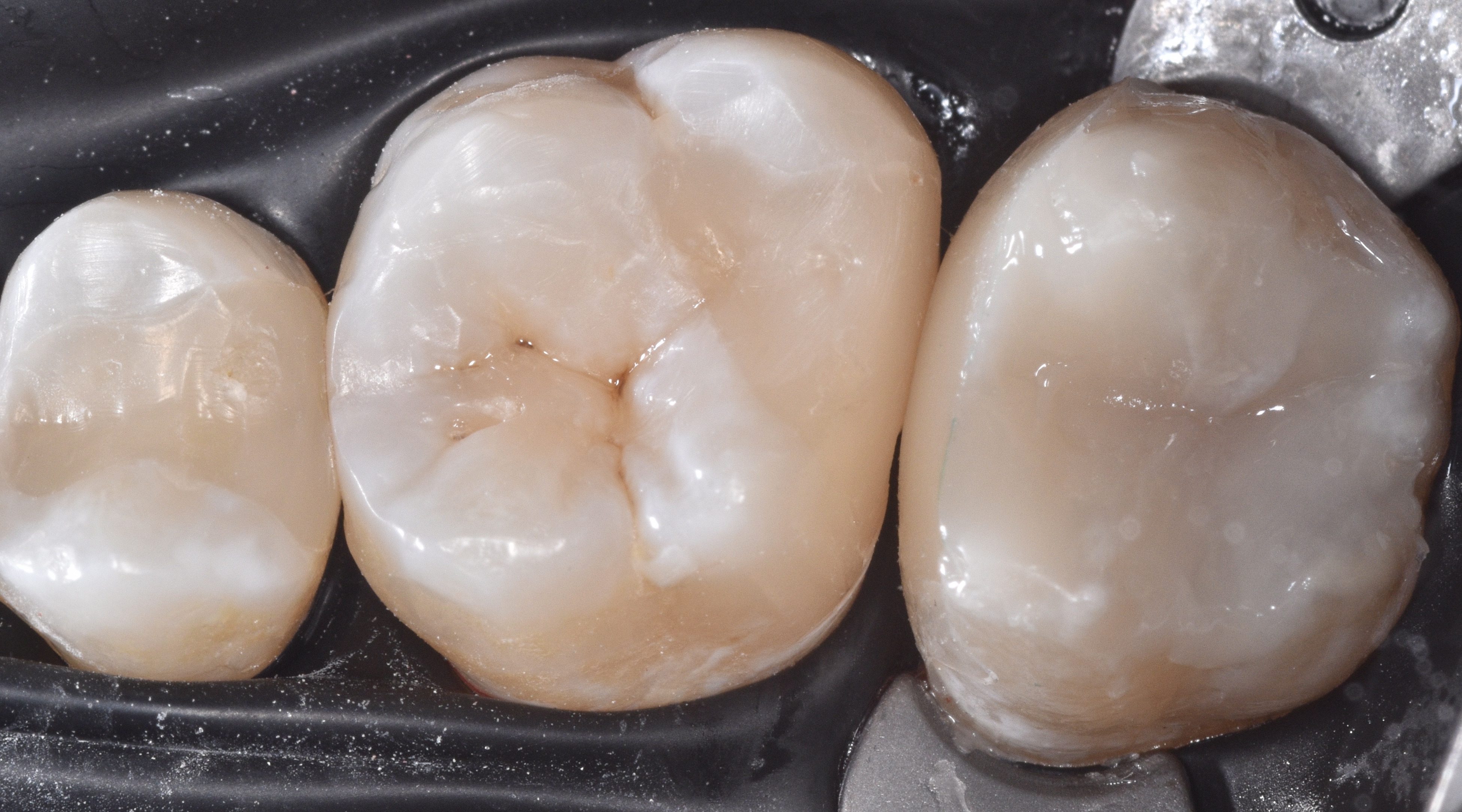
|

|
| Figure 11. One horizontal and two oblique layers to replace the enamel layer were placed and cured individually. | Figure 12. Finally, we removed the rubber dam, adjusted occlusion, finished and polished using a combination of multifluted carbide burs, Enhance points and Soflex disc. |
A common reason why deep and wide Class II preparations fail is due to the technique sensitivity of the procedure. We are used to using multiple bands which not only create transition lines within our restoration that are difficult to get rid of, but we also risk tearing our rubber dam in the process of going from one band to the other, thus potentially contaminating the operative field. By implementing the recommended technique the goal is to simplify and already complex procedure.